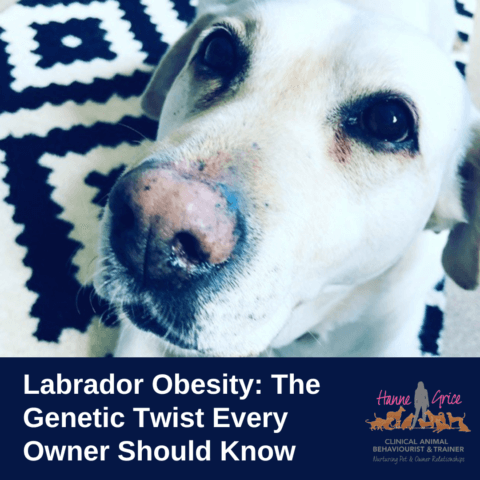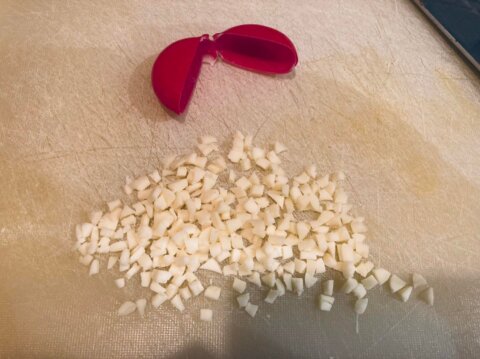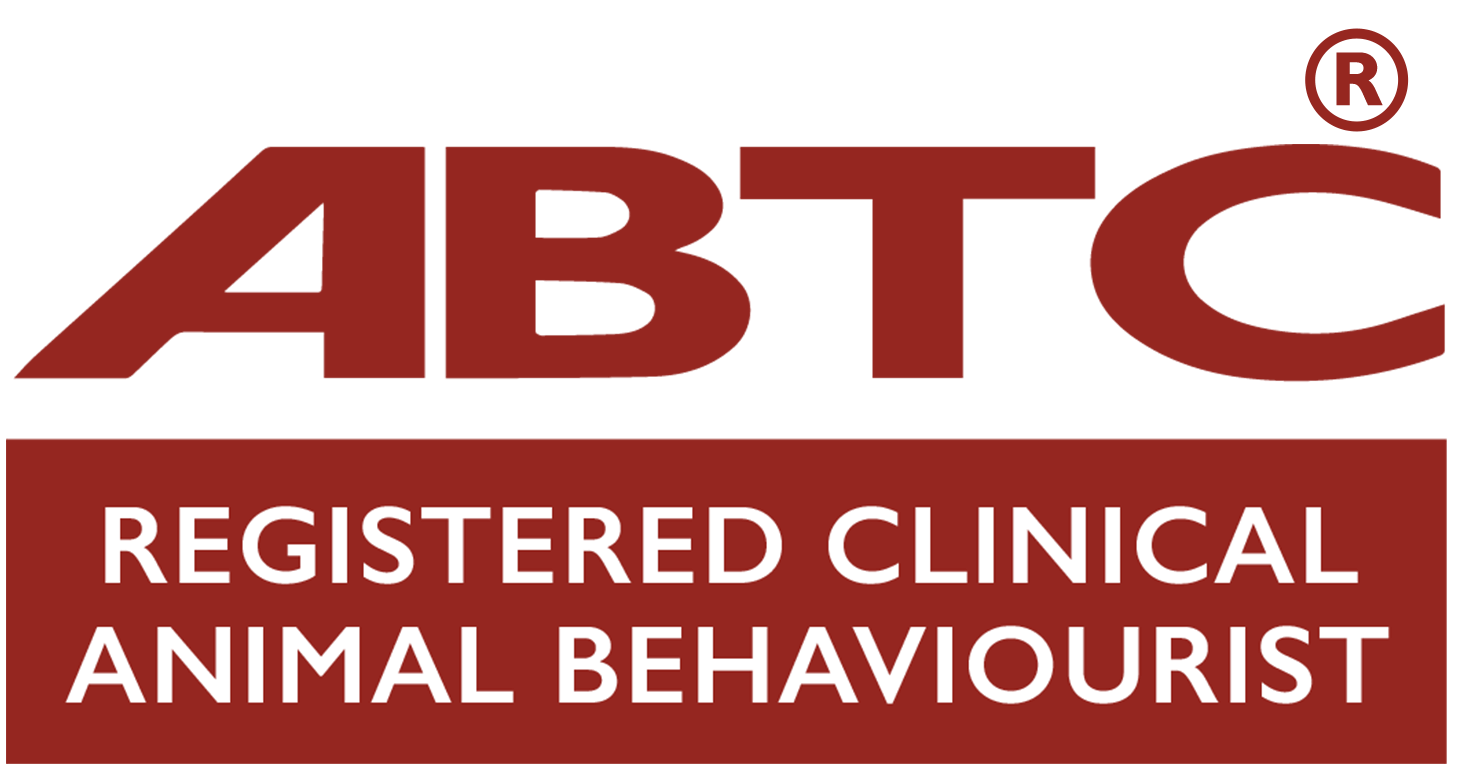
Recent research from the University of Cambridge has found something that Labrador owners may have long suspected: Labradors can carry a genetic mutation that predisposes them to obesity. The recent study supports previous evidence that a genetic mutation can contribute to their bottomless hunger pit! In fact, the researchers from Cambridge found that a mutation in about a quarter of Labradors affects the POMC gene—this gene regulates hunger and energy expenditure, making affected dogs hungrier and less efficient at burning calories.
The POMC Mutation and impact on Labrador behaviour
The POMC gene plays a crucial role in controlling appetite and energy use. Labradors with this mutation not only feel hungrier between meals but also burn 25% fewer calories at rest compared to their unaffected counterparts. This double whammy means that these dogs are more likely to gain weight, even if they eat the same amount as other dogs.
Dogs with the POMC mutation display a heightened interest in food, this may lead them to seek out snacks. This might include counter surfing, raiding bins, pockets in hanging jackets, even gobbling other perceived edible items, which can be highly dangerous – one recent case I was told about was a Labrador that died having consumed slug pellets found in the garden shed. So this POMC mutation means these dogs can be more persistent in their food quests. In a study involving 87 Labradors, researchers found that while all dogs felt full after a similar amount of food, those with the mutation were significantly more motivated to find and consume additional food. See the video below for more.
Tips for owners
Having been privileged to have owned several Labradors over the years, including chocolate, yellow, and now red, all seemed constantly hungry and tended to put on weight easily. Whilst my Labradors were never tested for the gene mutation, it is possible they sat in this dog population. So, to help owners manage the weight of their dog if they have a tendency to gain weight and seem constantly hungry, see my tips below.
- Apply the Rule of 1/3s for food: To help keep the hunger pains at bay, apply the Rule of Foods – this means the first 1/3 of all your dog’s calorie intake for that day is via training (e.g.) capturing any moments of brilliance you like and want to be repeated such as staying calm as a jogger/another dog potters by, or when you are proactively teaching a new behaviour or honing a learnt one.
The second 1/3 of the dog’s calorie intake for that day is via food enrichment toys such as using a Toppl, Kong, Feast Mat, Yoggie Pot, and so on. This not only helps entertain your pooch and bust some neurons, it also spreads out your dog’s food across the day, avoiding sugar dips.
The final 1/3 of all their daily calorie food intake can be via the bowl if you wish or via scatter feeding, etc. For my Labradors, I will give a very small handful of breakfast and tea in their bowl, then pepper the day with the rest of their foodstuff with a large amount given as a reward out on walks to reinforce focus and attention onto me, reward great behaviours around others, and enable sniffing on verbal cue “Find it” where planting food hides, to encourage exploration and increase confidence and resilience.

Babybel Challenge
- Slow feeders: Building upon the points made above, when using a bowl for your dog’s meals, you can use slow feeders, which can help reduce the rate at which your dog eats, help with digestion, and make their meals last fractionally longer, keeping them engaged. You can also be playful with their meals – spreading out their kibble in lines and shapes in PacMan style whilst combining great behaviours like “Wait” then cue them to “Get it”. See an example of this with my Labrador Hattie.
- Review current exercise levels and adjust: Depending on your Labrador’s age, state of health, and motivation levels, they may vary in their physical activity levels. However, it is important to ensure that they are getting plenty of physical and mental activity that is adjusted to their specific abilities and needs to help burn calories. For younger or elderly dogs or those who may be recovering from surgery, long hikes may not be feasible. However, there are alternative ways you can encourage movement safely. For example, utilising the principles of Sarah Fisher’s ACE Freework, you can set up areas inside your property or outside for your dog to walk around, over, and under items from the home whilst searching out some of their daily food intake. This promotes low-octane behaviour and calmness whilst also teaching your dog spatial awareness – a factor of dog intelligence. Click here to learn more about ACE Freework.
Teaching tricks is another way to get your dog moving and hone their focus onto you, for example teaching them to come around, under your legs and sit (what I can a ‘Peek-A-Boo’), can be a great way to build recall, and get your dog moving. See my video on how to teach this. For more ideas for dogs of all ages, get my book Playing With Your Dog. - Review rewards and portion sizes: There are lots of great commercial dog treats available nowadays, however, alternatives can include low fat meats such as cooked chicken, rabbit, turkey, ostrich and white fish. Some dogs also enjoy raw carrot, blueberries and peas. You can find out what ‘floats’ your dog’s boat via my Preference Test – click here to watch the video on how to do this.
When you are working out what your dog loves, do include toys and activities and compare these against one another and food stuffs. Rewarding your dog with the chance to do something they enjoy like playing with others or sniffing lamp-posts can be a great non-calorific way to reward for great behaviour. For example, when my Labrador sees another dog, he will stop – look at me – if I know the dog is one of his friends, I will say “Yes” to mark the desired behaviour of waiting and checking in with me – his reward is then me saying “Go play”, so he can dash around with his pal, and in that moment, this is far more rewarding to my dog than having a food treat.
Also, be aware of the size of treats you are using. I regularly post on socials about my Babybel Challenge – this is to see how many cuts from a single Babybel can be made, and then I challenge my followers. To date, I have managed to cut 426 pieces from one Babybel. The idea is to encourage owners to review the treat size they give their pooch, highlighting the same amount of food is used to reward yet by making the sizes smaller, the dog can be rewarded more frequently across the day for behaviours you love, which increases the dog’s ability to learn and perform behaviours you want to be repeated, and reduce hanger whilst watching their waistline.
What are the broader implications of this research?

Blaze – now 38kg
The research published by the University of Cambridge sheds light on obesity in humans as well. That is because the POMC gene and its effects are similar in both dogs and humans, highlighting obesity’s genetic factors across species. Furthermore, this research not only helps dog owners better understand the physiological factors involved, but also how this may contribute to some frustration-related behaviours they may display such as jumping up, counter-surfing, vocalisations, scavenging on walks, guarding of items, even a breakdown in recall where the dog may dash off to raid the neighbour’s bird table. Hence, such studies help aid our understanding of obesity in general.
So, while owning an ever-hungry Labrador, like my new rescue dog Blaze who came to me seven weeks ago at a hefty 45kg, it can be challenging; understanding the genetic factors at play can empower owners to take proactive steps. With careful management of their environment and providing more frequent feeding and enrichment opportunities with their daily food calorie allowance, these dogs can maintain a healthy weight and enjoy a happy, active life.
For more detailed information, visit the University of Cambridge’s research news here.
References
- Marie T. Dittmann et al. Low resting metabolic rate and increased hunger due to β-MSH and β-endorphin deletion in a canine model.Sci. Adv.10,eadj3823(2024).DOI:10.1126/sciadv.adj3823
Learn more about our classes

Get Hanne's Book
Playing With Your Dog will help any dog owner work out the games that are best suited for their pet to play throughout his life, from puppyhood to old age. The book also shares some tricks for all ages, group activities, and recommended toys that dogs will enjoy.


























